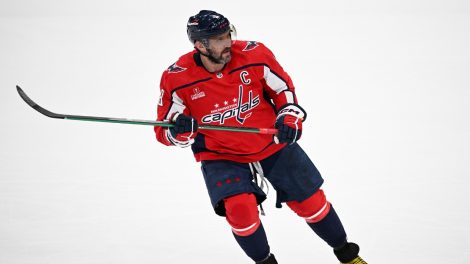Dallas Eakins can’t recall the exact details, but he remembers the broad strokes. He was coaching the Toronto Marlies on a night the team had fallen behind by a few goals and showed no signs of closing the gap, so he pulled the goalie with 10 minutes remaining in the third period. Suddenly, the Marlies were swarming, and while no great comeback was realized, the bench boss was blown away by how his club responded with six attackers. “Then you start thinking, ‘Jeez, we don’t need the goalie,’” says Eakins.
While his coaching brethren probably aren’t ready to take that tongue-in-cheek suggestion to heart, they are more willing than ever to pull their goalies with substantial time left on the clock. The question now becomes: How do coaches determine exactly when to yank the masked man?
At this point, there’s simply too much math to dispute the benefits of trying to get the ’tender on the bench sooner rather than later. Crunching precise numbers on this issue—which the NHL does not do yet—is tricky because goalies who’ve been pulled often return to the crease if there’s a faceoff in the vicinity of their net, then come out again when the play moves up the ice. What we can say is that during the 2015–16 NHL regular season and the first few nights of playoff action, teams that pulled their puckstopper for the final time with between 90 seconds and five minutes remaining in a one-goal game tied the contest approximately 16 percent of the time; those that waited until there was less than a minute and a half left squared the affair approximately 10 percent of the time.
Those numbers obviously weren’t available to Eakins when he began a four-year stint as the Marlies bench-runner in 2009–10. However, one of Eakins’s buddies passed along an academic paper that indicated coaches were waiting way too long to deploy an extra skater. Eakins, who now guides the American Hockey League’s San Diego Gulls, embraced the logic and, slowly but surely, so have more and more of his contemporaries. But even for coaches who are willing to watch an empty-netter end the night early, the issue can be more nuanced than “the sooner the better.” Maybe you get a man advantage and the power play has been clicking, so you don’t mess with it. Or your team is pressing with significant time left and looks dangerous at 5-on-5: Do you let it play out or give them more runway with an extra skater?
As Eakins notes, the flow of the game plays a major role in determining when you make the move. Maybe a coach planned on removing the goalie with two minutes left, but stoppages were such that his big guns were rested with three minutes to go. “I’m not going to leave these guys sitting there on the bench for another minute—they’re ready to go,”says Eakins.
And while we’re sure Eakins will continue to start games with a goalie, there’s no rule that states the only time you can remove him is toward the end of a contest. “When you’re having that off night and it’s late in the second period, I’m like, ‘There’s a minute and a half left. Why don’t we pull him right now?’” he says. “What if you pulled him at the end of the second and got one and it livened your bench up? That might be the next wave of it.”
Coaches have differing views on the tactic, but there’s one thing Eakins says they can all agree on: “You don’t want to be pulling your goalie. That means you’re losing the game.”









